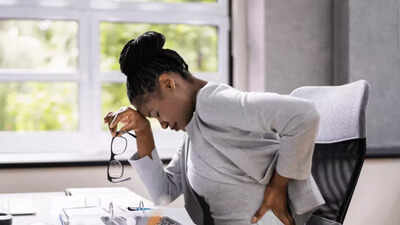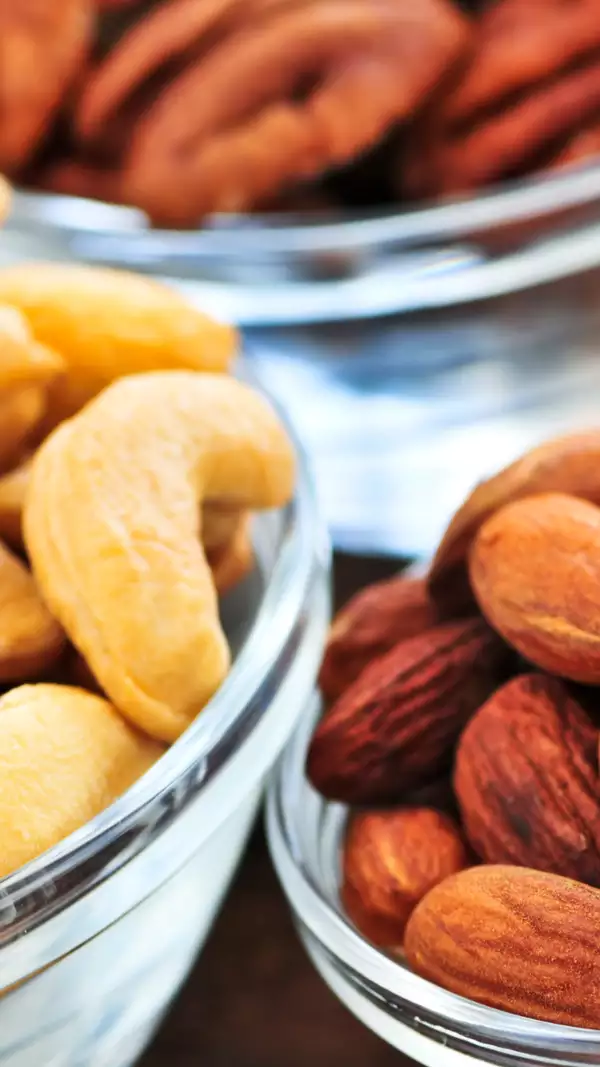- News
- lifestyle
- health-fitness
- health-news
- Sitting for hours giving you backache? Major study reveals methods to get relief that work like magic
Trending
Sitting for hours giving you backache? Major study reveals methods to get relief that work like magic
A systematic review in BMJ Evidence-Based Medicine reveals only 10% of treatments for low back pain offer genuine relief. Effective treatments for chronic back pain include exercise, spinal manipulative therapy, and specific drugs, but with only slight pain reduction. Researchers emphasize the urgent need for better evidence and more research in this area.
There’s no point in denying the relatability of the meme now - you might be in your 30s, but your back likely is 90 years old. Thanks to your chronic backache, the reality check of that wildly popular meme is harsh but hundred percent agreeable.
And now a recent systematic review indicates that only a handful of treatments for low back pain are truly effective, highlighting the urgent need for more research in this area. According to a published recently in BMJ Evidence-Based Medicine, only about 10% of commonly used treatments for low back pain provide genuine benefits, with many offering pain relief that is only slightly better than a placebo.
What does the study say?
A research team led by academics in Australia set out to evaluate the effectiveness of non-surgical treatments for back pain in adults. They analyzed 301 trials that examined 56 different treatments specifically for lower back pain.
Participants in the studies reported their pain intensity at the beginning of the trial and again after receiving treatment. The researchers also assessed the reliability of the evidence provided in these studies. They found that only one treatment for acute low back pain and five treatments for chronic (long-term) back pain were deemed “efficacious.”

The effective treatments for acute low back pain included non-steroidal anti-inflammatory drugs (NSAIDs), such as ibuprofen. For chronic back pain, the treatments shown to be effective were exercise, spinal manipulative therapy, taping, antidepressants, and a type of drug known as transient receptor potential vanilloid 1 (TRPV1). However, even these treatments only resulted in “slight” or “small” reductions in pain compared to a placebo (a dummy drug).
The authors noted that the best available evidence suggests that only one in ten common non-surgical and non-interventional treatments for low back pain is effective, providing small pain relief beyond what a placebo would offer. They stated that exercise, paracetamol, and glucocorticoid injections “probably provide little to no difference in pain” for acute lower back issues. Additionally, antibiotics and anesthetics were found to be “not efficacious” for long-term lower back problems.
While the evidence remains inconclusive, the information available does indicate that some treatments may be effective for acute back pain. The authors have called for more research to address the “remaining uncertainty” surrounding many back pain treatments.
Dr. Aidan Cashin, the Deputy Director of the Centre for Pain IMPACT at Neuroscience Research Australia (NeuRA) and a Conjoint Senior Lecturer in the School of Health Sciences at UNSW Sydney, emphasized that low back pain is an increasingly concerning global issue.
He explained to Gizmodo, “We were motivated to conduct this review because non-surgical and non-invasive approaches are recommended as the first-line treatment. However, there are many options available, and it can be challenging to determine which ones are effective.”

He further added, “The majority of cases in this area are classified as non-specific, meaning there is no immediately identifiable cause. Non-surgical and non-interventional treatments are typically the first-line care for low back pain, so we aimed to evaluate their effectiveness in comparison to placebo treatments. Surprisingly, we found that only about one in ten of these treatments were effective, and most provided only marginal pain relief that was slightly better than a placebo. In other words, our review did not find reliable evidence of significant effects for any of the treatments we included.”
What is lower back pain?
Lower back pain, also known as low back pain (LBP), is discomfort or aching in the lumbar region of the spine, between the lower ribcage and the top of the pelvis, and can range from mild to severe.
Here's a more detailed explanation:
Location: The lower back, or lumbar region, is the area of the spine below the ribcage and above the pelvis.
Symptoms: Lower back pain can manifest as a dull ache, sharp pain, stiffness, or pain that radiates into the buttocks, hips, or legs.
Cause of lower back pain:
Lower back pain can stem from various causes, including muscle strains, ligament sprains, herniated discs, arthritis, spinal stenosis, and even injuries or conditions affecting other parts of the body, such as kidney problems.
Here's a more detailed breakdown of potential causes:
Muscle and Ligament Strains/Sprains: These are injuries to the muscles, tendons, and ligaments in the back, often resulting from sudden movements, lifting heavy objects improperly, or repetitive strain.
Herniated or Bulging Discs: The cushions between the vertebrae can bulge or rupture, potentially pressing on nerves and causing pain.

Arthritis: Degenerative changes in the spine, such as osteoarthritis, can lead to inflammation and pain.
Spinal Stenosis: Narrowing of the spinal canal can put pressure on the spinal cord and nerves, causing pain and other symptoms.
Spondylolisthesis: A vertebra slips out of place, potentially causing pain and nerve compression.
Sciatica: Compression of the sciatic nerve, often caused by a herniated disc or other conditions, can cause pain radiating down the leg.
Osteoporosis: Weakened bones due to osteoporosis can lead to fractures, including in the spine, causing pain.
Ankylosing Spondylitis: A chronic inflammatory condition that can cause the spine to fuse, leading to stiffness and pain.
Remedies for lower back pain:
For lower back pain, try a combination of rest, ice/heat therapy, gentle exercise, and over-the-counter pain relievers. If pain persists or worsens, consult a healthcare professional.
Here's a more detailed breakdown of potential remedies:
Initial Rest: Avoid activities that aggravate the pain, but prolonged bed rest is generally not recommended.
Gentle Movement: After a few days of rest, gradually resume light activities like walking.
Avoid Twisting and Heavy Lifting: Be mindful of movements that strain the back.
Heat and Cold Therapy: Apply ice packs to the painful area for 15-20 minutes several times a day, especially in the first 24-48 hours, to reduce inflammation. After a few days, switch to heat therapy (heating pads, warm baths) to relax muscles and increase blood flow.

Pain Relief: Over-the-Counter Medications: Consider nonsteroidal anti-inflammatory drugs (NSAIDs) like ibuprofen (Advil, Motrin) or acetaminophen (Tylenol) to reduce pain and inflammation.
Maintain Good Posture: Be mindful of your posture when sitting, standing, and lifting.
Supportive Seating: Choose a chair with good back support.
Proper Lifting Techniques: Bend at the knees, keep your back straight, and hold the load close to your body when lifting.
Gentle Exercises: Engage in regular, low-impact exercises like walking, swimming, or yoga to strengthen back muscles and improve flexibility.
Core Strengthening: Focus on strengthening core muscles, which help support the spine.
Stretching: Regular stretching can help improve flexibility and reduce stiffness.
Sleep in Fetal Position: Sleeping on your side with knees drawn up can help relieve pressure on your lower back.
Pillow Support: Place a pillow between your knees when sleeping on your side or under your knees when sleeping on your back.
Firm Mattress: A firmer mattress can provide better support for your spine.

About the Author
TOI Lifestyle DeskEnd of Article
FOLLOW US ON SOCIAL MEDIA
Visual Stories
Tired of too many ads?










